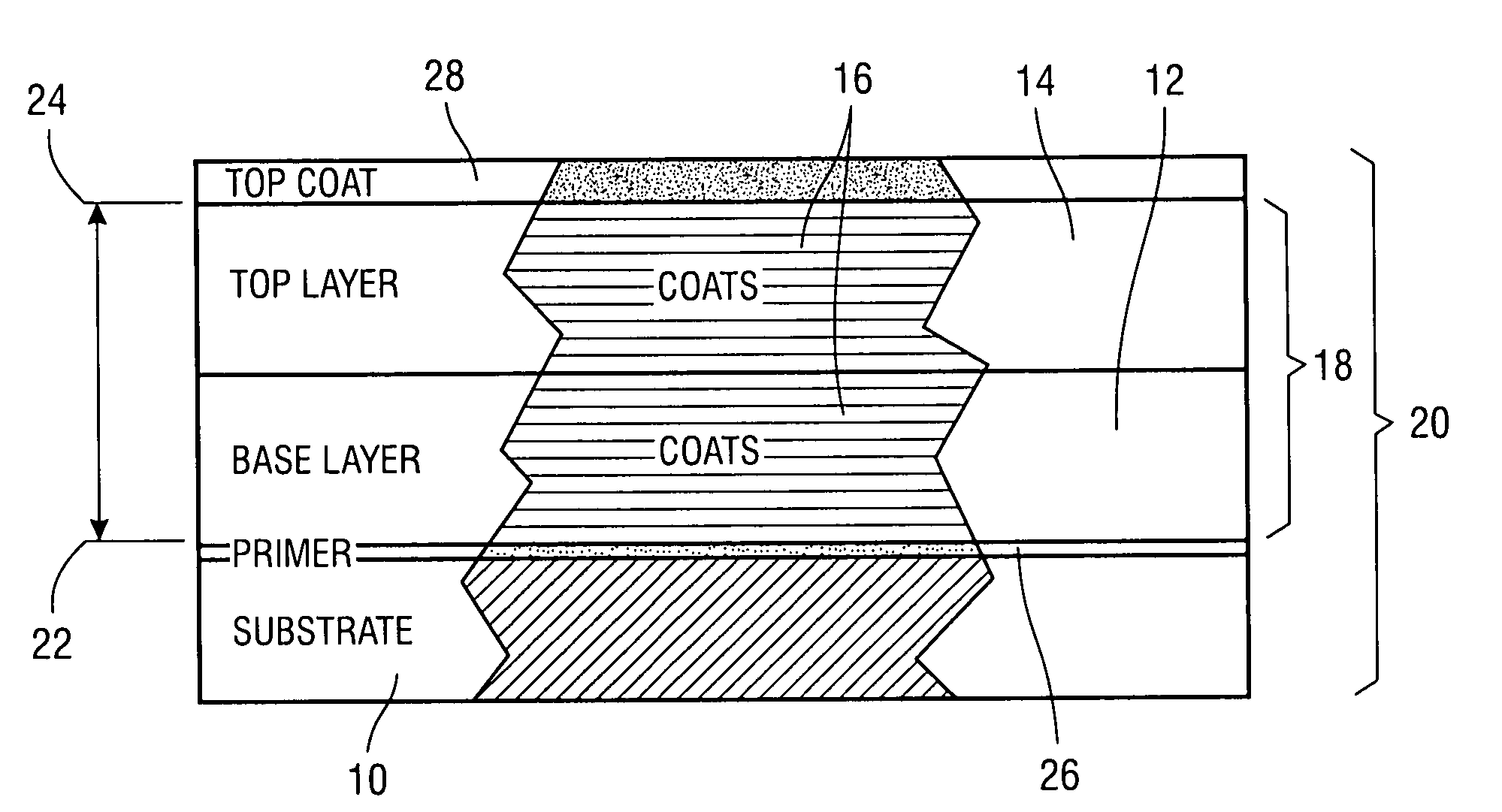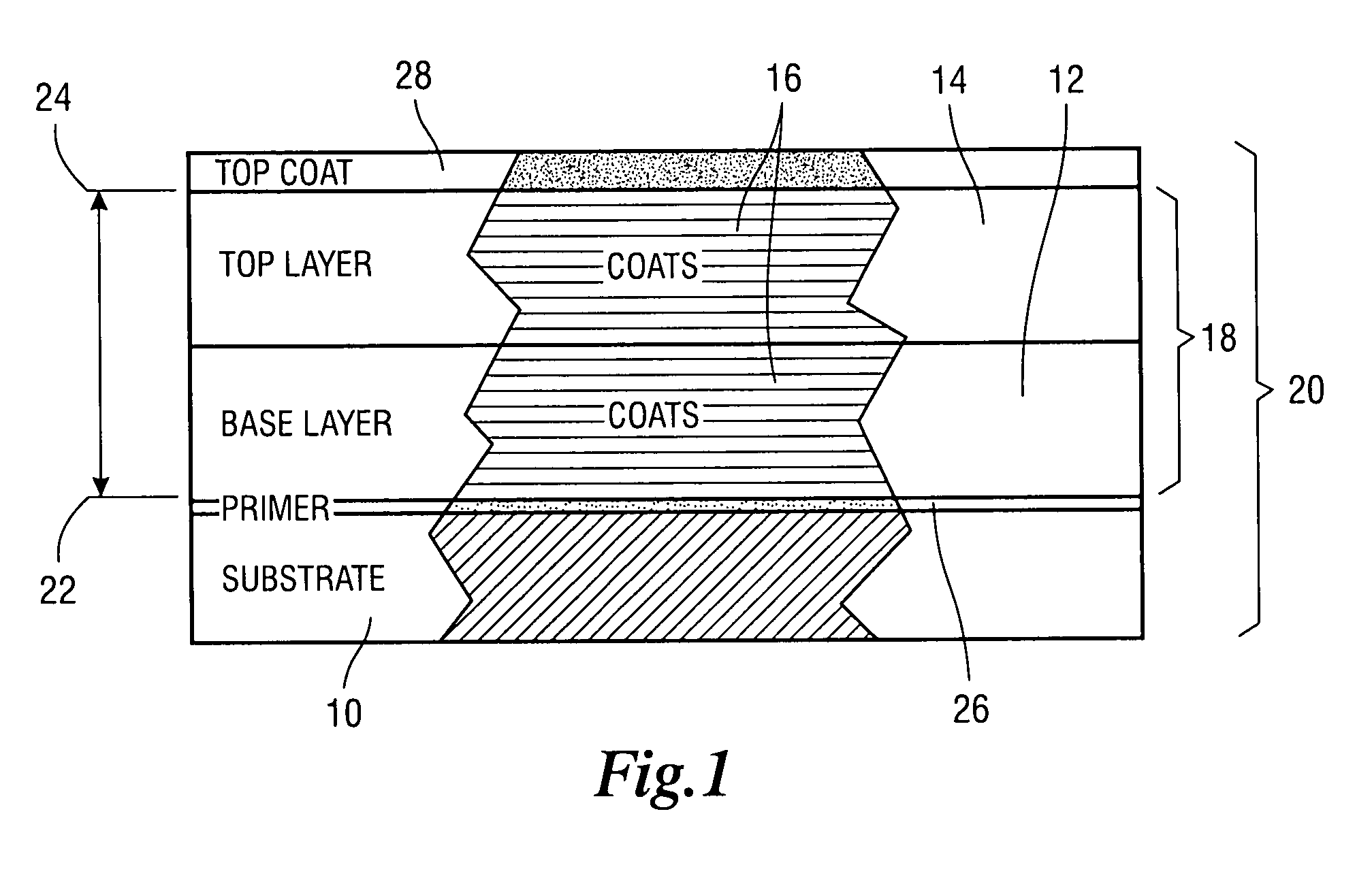High temperature substrate protective structure
a protective structure and high temperature technology, applied in the field of substrate protective structures, can solve the problems of pin holing, poor durability, difficult processing, etc., and achieve the effect of high elongation and exceptional coating quality
- Summary
- Abstract
- Description
- Claims
- Application Information
AI Technical Summary
Benefits of technology
Problems solved by technology
Method used
Image
Examples
examples
[0048]It will be readily understood that the following description of the embodiments of the present system, technique and method is not intended to limit the teachings herein.
example i
[0049]The PAEK-based coating comprising a Base Layer of A-PEKK and Top Layers of PEEK was compared against a standard monolayer PEEK coating by measuring the resistance to thermal cycles between a hot oven and ice water. The A-PEKK has very low Shrinkage (meaning 0.3% to 0.5% versus 0.7% to 1.0% for PEEK), twice the elongation to break (meaning 80% versus 40% for PEEK), but poor abrasion resistance compared to PEEK. Its crystallinity is less (meaning less than 15%) than PEEK, which is generally 25% to 30%. The A-PEKK is easy to apply to a wide range of geometries and part sizes and does not crack or delaminate as does PEEK. The A-PEKK / PEEK multi-layer coating is shown to have numerous advantages over a PEEK coating such as processability, durability to stresses, and excellent abrasion resistance. The present teachings utilize the ΔT, the number of test cycles, and definitions of pass / fail which are embodied in the sample preparation, test method, results, and conclusions sections se...
example ii
Increased Adhesion by Use of Coupling Agent.
[0078]Pipe sections made from carbon steel 4″ diameter and 2″ long were prepared for coating by heat cleaning and grit blasting.
[0079]Pipe sections were wiped with an alcohol-water solution containing 2% of a high temperature silane with a functional group that interacts with A-PEKK. The silane was cured by heating for 20 minutes at 110° F. After curing, the silane chemically reacts with the metal substrate to form an enhanced corrosion barrier. This corrosion barrier further retards solvents and gases from permeating to the metal surface. As a consequence, the initial strength of adhesion is retained for longer periods of time in these environments.
[0080]Three sample coatings were prepared: (1) PEEK, (2) PEEK / A-PEKK, and (3) PEEK / A-PEKK / coupling agent. The Shrinkage, elongation to break, and the crystallinity of the materials is the same as for Example I. The total coating thickness of each coating was 25 mil. The A-PEKK layer was 35% of ...
PUM
| Property | Measurement | Unit |
|---|---|---|
| thickness | aaaaa | aaaaa |
| thickness | aaaaa | aaaaa |
| thickness | aaaaa | aaaaa |
Abstract
Description
Claims
Application Information
 Login to View More
Login to View More - R&D
- Intellectual Property
- Life Sciences
- Materials
- Tech Scout
- Unparalleled Data Quality
- Higher Quality Content
- 60% Fewer Hallucinations
Browse by: Latest US Patents, China's latest patents, Technical Efficacy Thesaurus, Application Domain, Technology Topic, Popular Technical Reports.
© 2025 PatSnap. All rights reserved.Legal|Privacy policy|Modern Slavery Act Transparency Statement|Sitemap|About US| Contact US: help@patsnap.com


